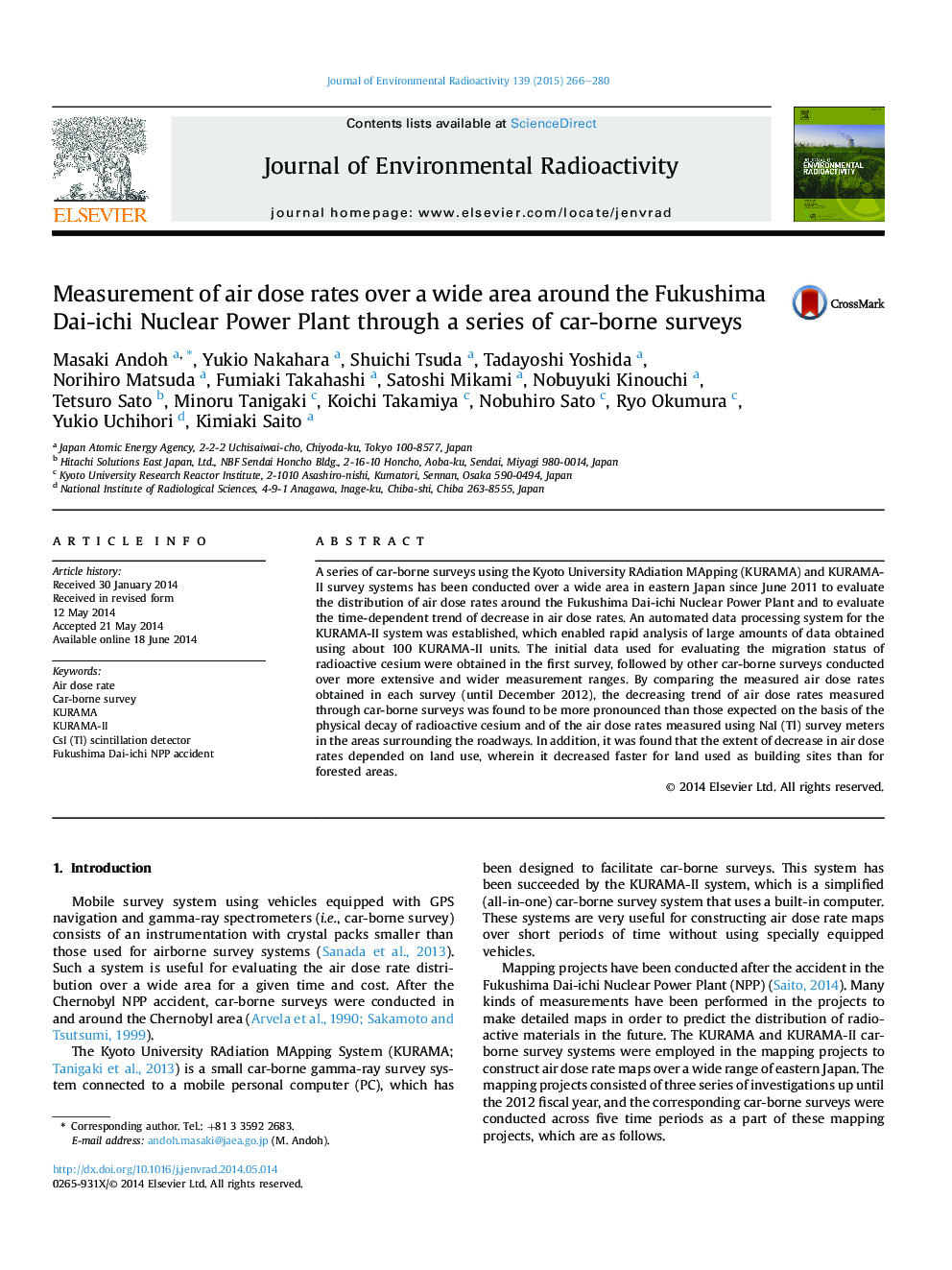| Article ID | Journal | Published Year | Pages | File Type |
|---|---|---|---|---|
| 8082630 | Journal of Environmental Radioactivity | 2015 | 15 Pages |
Abstract
A series of car-borne surveys using the Kyoto University RAdiation MApping (KURAMA) and KURAMA-II survey systems has been conducted over a wide area in eastern Japan since June 2011 to evaluate the distribution of air dose rates around the Fukushima Dai-ichi Nuclear Power Plant and to evaluate the time-dependent trend of decrease in air dose rates. An automated data processing system for the KURAMA-II system was established, which enabled rapid analysis of large amounts of data obtained using about 100 KURAMA-II units. The initial data used for evaluating the migration status of radioactive cesium were obtained in the first survey, followed by other car-borne surveys conducted over more extensive and wider measurement ranges. By comparing the measured air dose rates obtained in each survey (until December 2012), the decreasing trend of air dose rates measured through car-borne surveys was found to be more pronounced than those expected on the basis of the physical decay of radioactive cesium and of the air dose rates measured using NaI (Tl) survey meters in the areas surrounding the roadways. In addition, it was found that the extent of decrease in air dose rates depended on land use, wherein it decreased faster for land used as building sites than for forested areas.
Keywords
Related Topics
Physical Sciences and Engineering
Energy
Nuclear Energy and Engineering
Authors
Masaki Andoh, Yukio Nakahara, Shuichi Tsuda, Tadayoshi Yoshida, Norihiro Matsuda, Fumiaki Takahashi, Satoshi Mikami, Nobuyuki Kinouchi, Tetsuro Sato, Minoru Tanigaki, Koichi Takamiya, Nobuhiro Sato, Ryo Okumura, Yukio Uchihori, Kimiaki Saito,
